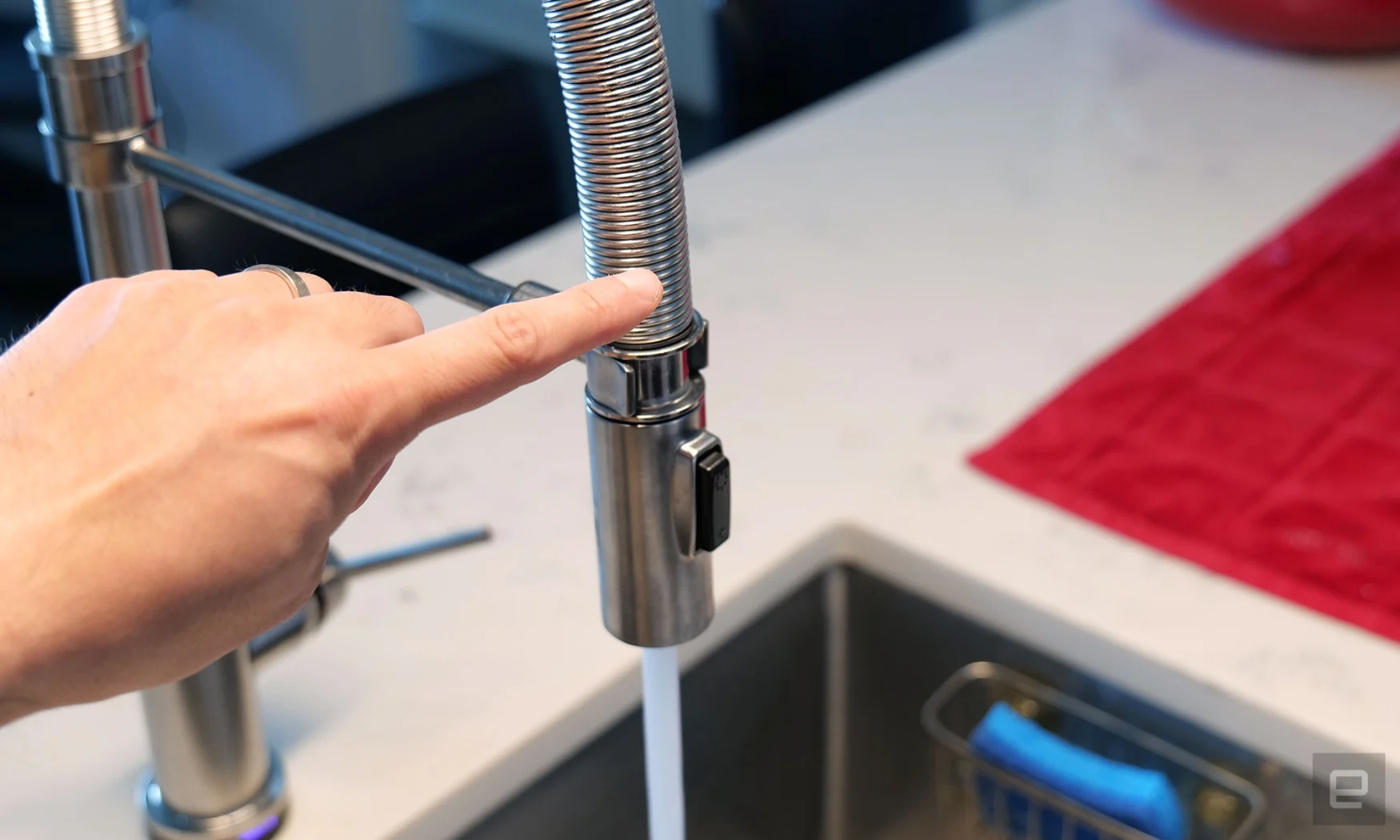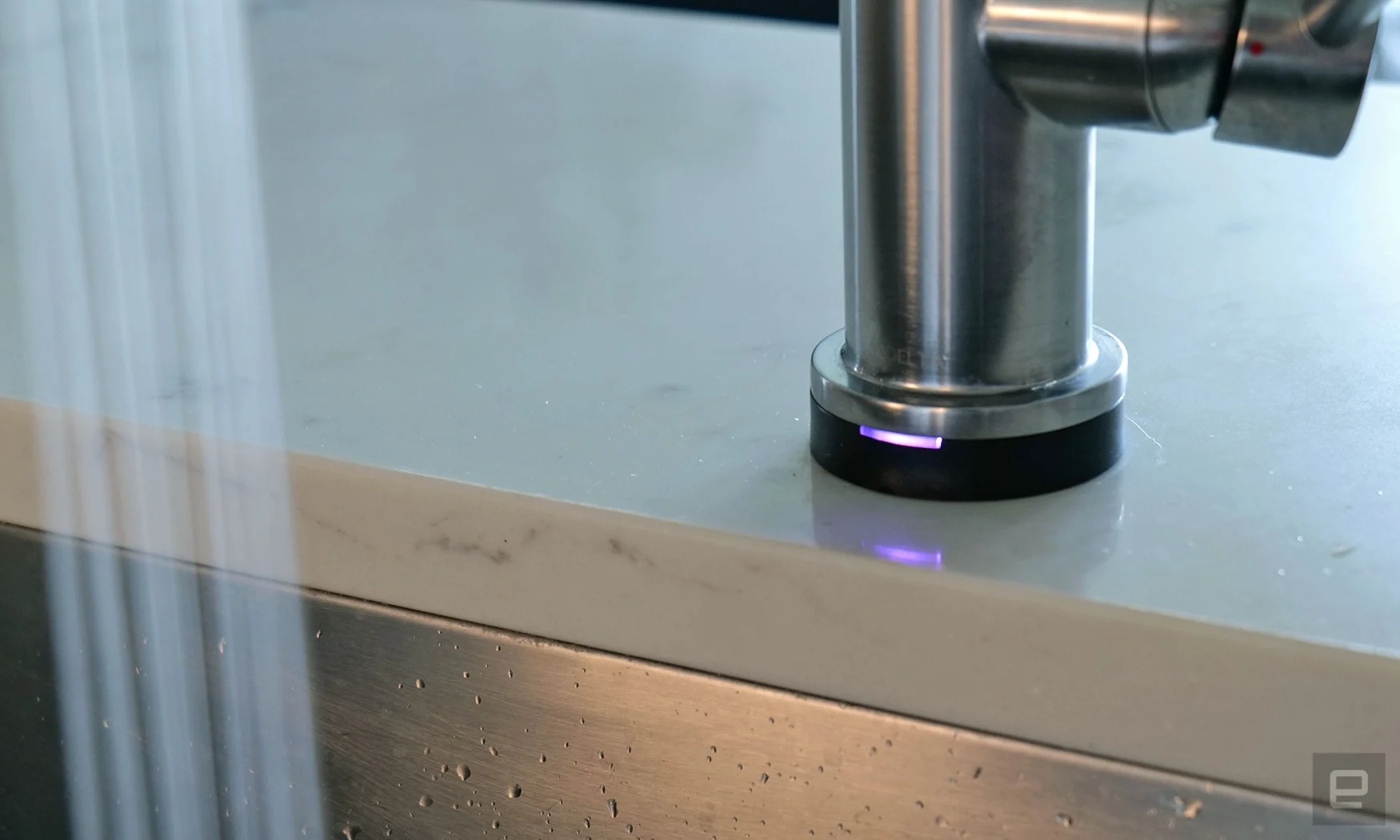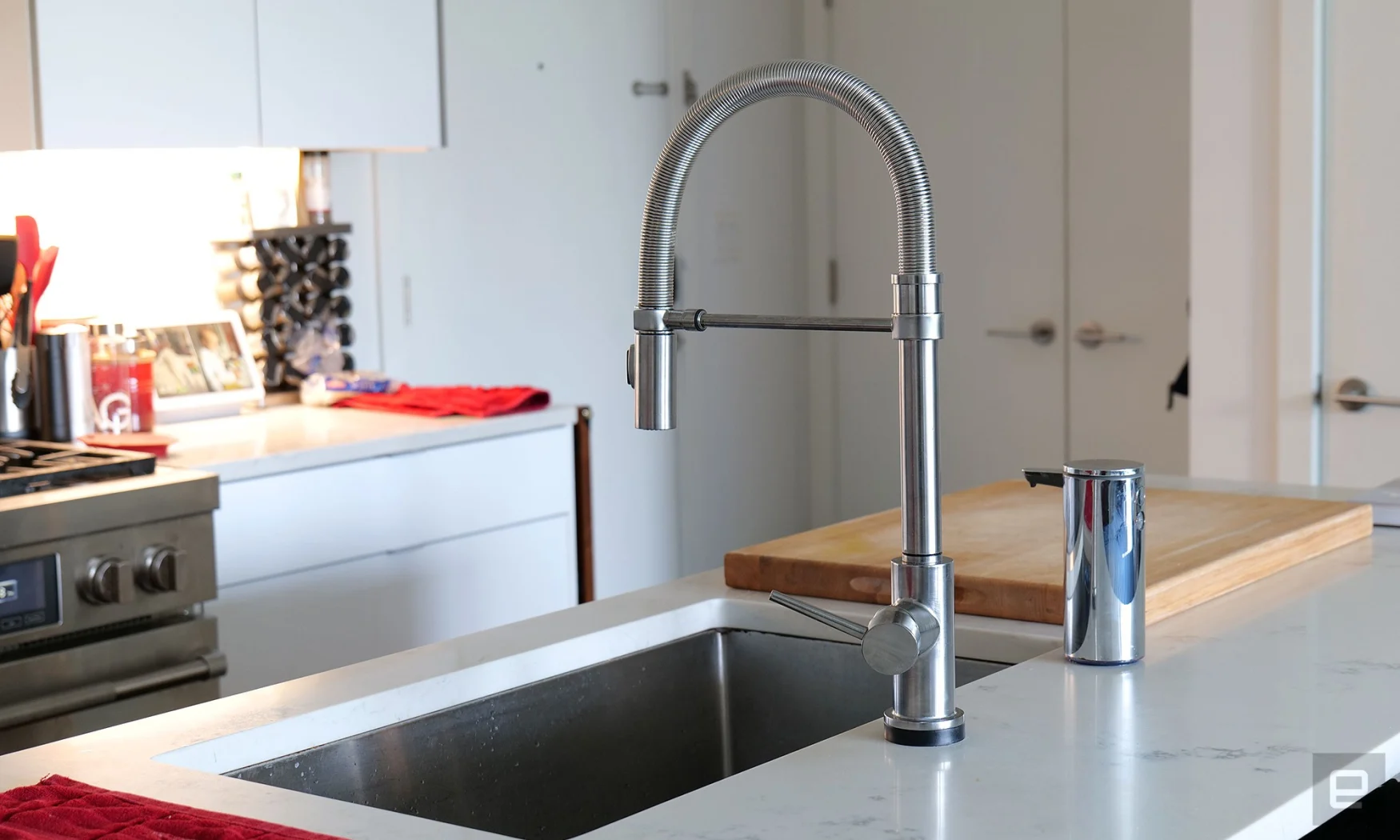Even for someone like me who spends a ton of time testing phones and laptops, it can be hard to keep up with innovations across every category of device – especially when it comes to things like fixtures and appliances that aren’t meant to be replaced very often. So a little while ago when my kitchen faucet sprung a leak I was faced with a question: Are today’s new-fangled touch-activated models a worthwhile purchase or are they just a waste of money?
At first, I was annoyed by the whole affair since we had only moved into our place in 2018 and as it was new construction, I expected the faucet to last longer than five years. But after getting it checked out things got worse as we learned it would cost more to fix it than to just buy a new one. So after the plumber told us to “treat yourselves” and we learned that apparently Delta is the Colgate of faucets (four out five plumbers recommend it!), we started looking at our options.
Photo by Sam Rutherford/Engadget
Now, as someone who’s never had to buy a faucet before, my wife and I were initially a bit lost. We started by looking at models that had a similar design to what we already had because we knew it would fit. But eventually, my love of gadgets drew me to Delta’s Touch2O line, which lets you control water simply by tapping instead of yanking the handle around. So even though I was already aware that some prominent chefs like J. Kenji Lopez-Alt aren’t a fan of touch-activated faucets, since I had never used one before, I figured why the hell not?
However, there are a couple of important considerations that come into play when buying one of these. The first is that they’re more expensive than a regular faucet due to the extra electronics and whatnot. Thankfully, despite being listed at around $1,000 on Delta’s website, the Trinsic Pro Touch2O we eventually settled on was available for half that on Amazon. And, compared to a traditional non-touch model, we were looking at about a $100 premium, which isn’t nothing, but it was low enough that my curiosity ultimately won out.


Sam Rutherford/Engadget
But more importantly, the only reason the Touch2O model wasn’t rejected outright is because we already had an outlet installed under our sink. By default, Delta’s Touch2O faucet runs on six included AA batteries that the company says should last about a year (or up to three years if you buy some larger C batteries). And while swapping in fresh cells every 12 months isn’t that much of a hassle, it’s something I’d rather not have to think about., Not to mention the waste of tossing dead akalines in the trash on a semi-regular basis isn’t ideal. Thankfully, Delta sells an AC adapter for its faucets that’s relatively cheap (about $40), which means that you only need to rely on the batteries if your power goes out (which is quite rare for us because we live in the city).
If it wasn’t for this, buying a touch-activated faucet that requires a constant power supply would have been a non-starter. Regardless, if you’re considering getting a Touch2O faucet from Delta, expect to pay about $150 or so more than a basic version. At least when it comes to installation, things are relatively straightforward. The main differences are making sure you don’t get your wires crossed and remembering to save a spot to stash the AC adapter so that it stays dry and out of the way.


Photo by Sam Rutherford/Engadget
Anyways, now that I’ve been using a Touch2O faucet for about three months, here are my thoughts. First, it takes a little getting used to, because ideally, you should leave the handle open all the time and rely entirely on touch controls to turn the water on and off. And after years of muscle memory telling me to do that exact opposite, this practice felt really unnatural for a couple weeks. But once I got past that, I really started to like it. Sure, it’s a small thing, but being able to touch the neck of the faucet quickly to shut off the water is nice when you’re trying to multitask. I think it’s slightly more sanitary too, because I can use the back of my hand to tap the neck of the faucet instead of reaching for the handle, which is nice if you’ve been trimming chicken or whatever.
After a while, using the faucet becomes one less thing to think about and I also really appreciate that Delta’s touch activation works pretty much anywhere, which makes it more fun for my toddler to play with when we’re washing our hands. And if he gets out of control, I can simply use the handle as normal to prevent unnecessary splashing. Another little bonus is that the Trinsic Pro Touch2O also features a little temperature indicator built into its base, which makes it easier for children to tell if the water is too hot to touch (red means stop). Finally, while it’s not directly related to the touch technology, I also really like how sturdy the coil is that supports the gooseneck.


Photo by Sam Rutherford/Engadget
So in the end, I will fully admit that although a touch faucet is hardly a game-changer, having one in my kitchen offers a few small perks that I think were worth the extra $150. That said, it still remains to be seen how this thing will hold up over time. I’m hoping that because Delta’s Touch20 devices use solenoid valves – which have been around since as far back as the early 1900s – there shouldn’t be any major tradeoff on durability. Because I really don’t want to think about buying another faucet for a long time.
This story originally appeared on Engadget

